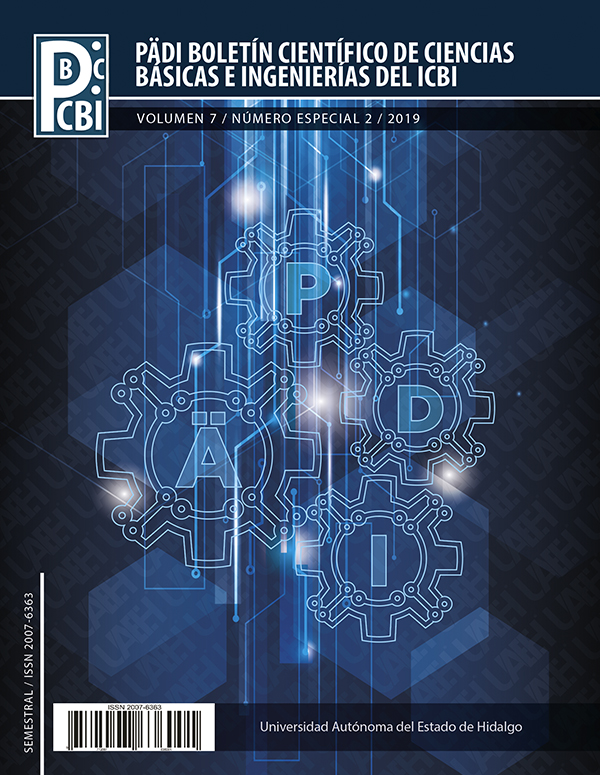Effect of Austenite Grain Size on Mechanical Behavior for AISI 1045 and 4140 Steels by Experimentation and Modeling.
Abstract
Medium-carbon steels are widely used in the making of mechanical pieces and components, such as gears, shafts, bolts, couplings, spindles, sprockets, connecting rods and crankshafts, because of their good mechanical resistance, toughness, and wear resistance. Many research has been focused on studying the behavior of wearing off, deformation and analysis of mechanical properties at high temperatures. However, little has been studied about evaluating its mechanical behavior related to the austenitic grain size (AGS). In this research, experimental results of the effect of AGS before quenched of two medium-C steels AISI 1045 y 4140, are presented through the numerical modeling, in order to determine the optimal processing conditions to obtain the desired mechanical properties. The grain size was evaluated between 5 y 110 µm. Experimental techniques were used to determine the microstructure, tensile strength, yield strength, hardness, and dilatometry to determine its deformation. The simulated results were obtained through the JMatPro. From the results, it can be mentioned that the AGS has an important role in the evolution of mechanical properties for the studied steels. When the AGS was higher than 15 and 45 µm for the steels AISI 4140 and 1045 respectively, the mechanical properties were in higher levels. The results through JMatPro were very close to the ones obtained experimentally, validating the numeric simulation in the prediction of the studied mechanical properties.
Downloads
References
Bhadeshia, H.K.D.H., 2008. Mathematical Models in Materials Science, Materials Science and Technology, 24: 128-135.
Białobrzeska B, Konat Ł and Jasiński R., 2017. The influence of austenite grain size on the mechanical properties of low-alloy steel with boron. Metals, 7: 26-45.
Celada-Casero C, Sietsma J and Santofimia M.J., 2019. The rol of the austenite grain size in the martensitic transformation in low carbon steels. Materials and Design 167: 107625-107634.
Frihat M., 2015. Effect of heat treatment parameters on the mechanical and microstructure properties of low-alloy steel. Journal of Surface engineering Materials and Advanced Technology, 4: 214-227.
Guo Z, Saunders N, Miodownik P and Schillé J. P., 2009. Modelling Phase Transformation and Material Properties Critical to the Prediction of Distortion During the Heat Treatment of Steels. International Journal Microstructure and Materials Properties, 4: 197-195.
Lee S.J, Park J.S and Lee Y.K., 2008. Effect of austenite grain size on the transformation kinetics of upper and lower bainite in a low-alloy steel. Scripta Materialia 59: 87-90.
López-García R.D, García-Pastor F. A, Castro-Roman M.J, Alfaro-López E and Acosta-González F., 2016. Effect of immersion routes on the quenching distortion of a long steel component using a finite element model. Transaction of the Indian Institute of Metals 69(9): 1645-1656.
Meysami A.H, Ghasemzadeh R, Seyedein S.H and Aboutalebi M.R., 2010. An investigation on the microstructure and mechanical properties of direct-quenched and tempered AISI 4140 steel. Materials and Design 31: 1570-1575.
Moleejane C. M, Sanusi K.O, Ayodele O.L and Oliver G.J., 2014. Microstructural features and mechanical behaviour of unalloyed medium carbon steel (EN8 Steel) after subsequent heat treatment," Proceedings of the World Congress of Engineering and Computer Science, vol. 2: 1-6.
Prawoto Y, Jasmawati N and Sumeru K., 2012. Effect of prior austenite grain size on the morphology and mechanical properties of martensite in medium carbon steel. Journal of Materials Science and Technology 25(5): 461-466.
Ruffing C, Ivanisenko Y and Kerscher E., 2016. A comparison of the fatigue and fracture behavior of high strength ultrafine grained medium carbon steel SAE 1045 with high strength bearing steel SAE 52100. 21st European Conference on Fracture, ECF21, 20-24 June 2016, Catania, Italy. Procedia Structural Integrity 2: 3240-3247.
Saunders N, Guo Z, Li X, Miodownik A.P and Schillé J., 2003. Using JMatPro to model materials properties and behavior. Journal of the Minerals, Metals and Materials Society, 55: 60-65.
Taghizadeh S, Safarian A, Jalali S and Salimiasl A., 2013. Developing a model for hardness prediction in water-quenched and tempered AISI 1045 steel through an artificial neural network. Materials and Design 51: 530-535.
Trzaska J, Jagiello A and Dobrzanski L.A., 2009. The calculation of CCT diagrams for engineering steel. Achives of Materials Science and Engineering, 39: 13-20.
Ulutan M, Osman N, Celik, H. G and Umit E. 2010. Effect of different surface treatment methods on the friction and wear behavior of AISI 4140 steel. Journal of Materials Science & Technology 26(3): 251-257.
Yaakoubi M, Kchaou M and Dammak F., 2013. Simulation of the thermomechanical and metallurgical behavior of steels by using ABAQUS software. Computational Materials Science, 68: 297-306.
Yang H.S and Bhadeshia H.K.D.H., 2009. Austenite grain size the martensite-start temperature. Scripta Materialia 6: 493-495.













